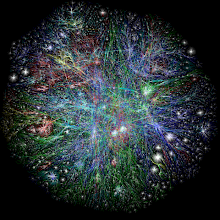Mobile communications and mobile phones have also played a significant part in the transformation of media and communications. The mobile phone started historically as communication device for carrying the human voice, however it is beginning to open up a world of entertainment, used to access a variety of media and communications (Tooth et al. 2006, 1). Much like the Internet, mobile communications technology has grown significantly over time. Although consumers are slowly beginning to use mobile Internet, Wireless Access Protocol (WAP), media and communications industries were powerfully affected by the phenomenon of short-message services (SMS) (Goggin cited in Cunningham and Turner 2006, 274; Flew 2002, 4). SMS allowed non-verbal text communication which could be read at leisure and saved for future reference. It was also seen as cheap, fast and effective, and was wholly embraced by young people, creating a new form of media use (Goggin cited in Cunningham and Turner 2006, 274). Further to this, multimedia messaging services (MMS) were developed shortly after, allowing mobile phones the capacity to send and receive pictures and short videos. Gerard Goggin (cited in Cunningham and Turner 2006, 274) notes that these mobile communications technologies had an unexpected impact on the media and communications industries, as SMS and MMS services have become an important and lucrative “path for interactivity” in television, offering voting in reality television programs, text strap-lines and video downloads. Much like the Internet, mobile communications devices provide television audiences with a tool for interactivity. As well as voting and downloads, audiences have the opportunity to respond to questions and topics via SMS or MMS, again with programs such as Sunrise. Mobile phones are of course also still used for traditional calling in to television and radio shows, being more convenient than a landline as calls can be made almost anywhere, at almost anytime.
Although mobile communications are not directly related to virtual cultures, I decided to make reference to the way in which they have transformed new media technologies in conjunction with the Internet as they play a relatively equal role in today’s society. I don’t think I know anyone without a mobile phone – even my 10 year old cousin has one. Also, people are increasingly using their mobile phones to access the Internet, particularly with the introduction of the 3G network, BlackBerry and iPhone.
References
Flew, T. 2002. New Media: An Introduction. South Melbourne: Oxford University Press.
Goggin, G. 2006. Chapter 15: The Internet, online and mobile cultures. In The Media and Communications in Australia, ed. S. Cunningham and G. Turner, 259-278. NSW: Allen & Unwin.
Although mobile communications are not directly related to virtual cultures, I decided to make reference to the way in which they have transformed new media technologies in conjunction with the Internet as they play a relatively equal role in today’s society. I don’t think I know anyone without a mobile phone – even my 10 year old cousin has one. Also, people are increasingly using their mobile phones to access the Internet, particularly with the introduction of the 3G network, BlackBerry and iPhone.
References
Flew, T. 2002. New Media: An Introduction. South Melbourne: Oxford University Press.
Goggin, G. 2006. Chapter 15: The Internet, online and mobile cultures. In The Media and Communications in Australia, ed. S. Cunningham and G. Turner, 259-278. NSW: Allen & Unwin.


No comments:
Post a Comment